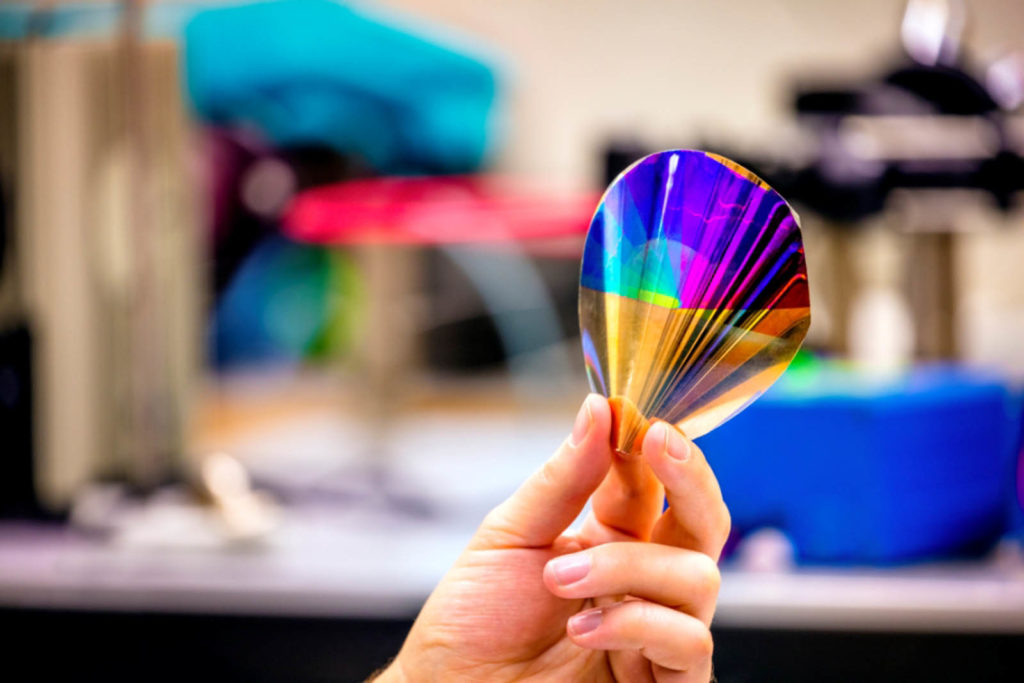Energy harvesting wearables offer an intriguing alternative in meeting energy needs.
by Seshadri Ramkumar
The topic of this article certainly exudes interest and intrigue, but while the nonconventional textiles sector has been well established for about 50-years, the energy harvesting field is yet nascent, and commercialization hasn’t reached a level that can be well quantified. Subsectors such as flexible wearables, energy harvesting and storage with fibrous materials are all relatively immature; however, the potential is huge.
These emerging fields could be important in contributing to the growth of the stagnant areas of the conventional textile industry, although the energy generation capability may be relatively much less compared to established primary and secondary sources. Within textile science, burgeoning fields provide enormous opportunity for collaborative multidisciplinary research.

From an industry point of view, these textile materials can find advanced applications for enhancing human life and even helping to save the environment. This means there are entrepreneurial opportunities with access to grants, such as the Small Business Technology Transfer (STTR), Small Business Innovation Research (SBIR) and blue-sky research projects funded by the Department of Defense, Department of Energy, National Institutes of Health and others.
Population growth and energy
Two major factors that influence the need and development of wearable and energy harvesting flexible materials are global population growth and energy needs. According to the United Nations, global population is expected to reach 9.7 billion by 2050, with India surpassing China as the most highly populated nation by 2030. This will create greater demands for food and fuel, which provide the basis for sectors allied with the textiles industry, such as automobiles, and motivates the textile industry to keep moving forward with both incremental and disruptive inventions.
According to the Organisation for Economic Cooperation and Development (OECD), global energy need is such that 20 percent of the population globally still does not have electricity. This underscores the need for infrastructure and research investments that can total up to $46 trillion. OECD estimates that with the growth in population, energy consumption will increase 80 percent by 2050. Any contributions from flexible polymers and textiles to manage this increase will be a welcome addition.
The need for diversification
Particularly in technologically advanced nations where the energy needs are higher, and a research base is well established with laboratories (such as the U.S. National Renewable Energy Laboratory), the ecosystem is suitable to carry out “mission-linked” research to develop cost effective and practically applicable energy harvesters.
According to the U.S. Energy Information Agency, in 2018, energy consumption was about 101.3 quadrillion British thermal units. Interestingly, the two major sources have been based on finite resources such as petroleum (37 percent contribution) and natural gas (31 percent), while renewables contribute only 12 percent. These compelling data show the potential for advanced textiles to contribute to and diversify energy needs.
Two leading nations, the U.S. and India, have immediate needs to diversify their cotton and textiles sector respectively. As about 80 percent of cotton grown in the U.S. is exported, any disruption in the trade—such as with the ongoing trade war between China and the U.S., or the slump in cotton yarn exports from India with over-capacity in spinning—forces the textile sectors in these countries to look beyond their comfort zones.

Wearables and energy harvesting
Basically, flexible fibrous assemblies that have added functional components, such as electronics wafers, IC chips or functional chemical formulations, are termed wearable textile technologies. Textile structures that can generate or harvest and store energy by converting mechanical and thermal forces generated either by the body or external sources are grouped as “wearables.”
Because the wearables sector is so nascent, valid, quantifiable data may not be available. However, these products can be grouped under the larger “smart textiles” sector, and this sector, based on surveys by many market research groups, is expected to reach $100 billion by 2025. Interestingly, the growth rate covers a broad range as low as 15 percent to 30 percent. Obviously, the data may be premature, but it shows opportunities ahead, nevertheless.
Early commercial success of textiles in energy storage came with the nonwoven battery separators. A good example would be glass fiber-based nonwovens that can separate anode and cathode while allowing free flow of ions.
Battery separators constitute an important market for nonwovens. According to Hollingsworth & Vose Co., depending on the type of batteries, such as lead acid or lithium ion, materials for separators vary, such as blends of manmade and organic fibers or glass fibers.
Electronics embedded textiles have provided opportunities for fashion and textile designers. Pauline van Dongen’s “Solar Parka” is based on converting solar rays to electricity to charge a smartphone battery within two hours. The designer has worked collaboratively with end-user communities to move the concept forward.
Twenty years back, Professor Sundaresan Jayaraman of the Georgia Institute of Technology (Georgia Tech) merged computer concepts with textiles, bringing out one of the world’s first wearable motherboards, termed a “Smart Shirt,” one of the earliest in the textiles industry to investigate the concept of flexible wearables. That early development over a period of twenty years has morphed into washable and durable wearables.
Standards for quality growth
The American Association of Textile Chemists and Colorists (AATCC) is part of an important collaborative effort to establish standards for wearable electronic textiles. This will enable the industry to develop new wearables whose benchmark qualities can be determined, opening-up new opportunities for small and medium enterprises.
The need to miniaturize the functional electronic components due to practical and washability needs in textiles is pushing the field to develop nano systems. Professor Zhong Lin Wang, Georgia Tech, about 2005 created a concept called, “self-powered nano systems,” that would generate power from an external environment to charge batteries. He has furthered this concept by devising hybrid cells, which can harvest energy from solar, chemical and mechanical means.
Recently, researchers from Purdue University have used chemical means to embed triboelectric generators to develop self-powered e-textiles that are hydrophobic due to the presence of fluorinated formulations.
The future trend is to use biomolecules such as proteins to create energy harvesting devices that can be coupled on to a fabric. Recently, researchers at Texas A & M University have developed electrodes using composites made of carbon black and polypeptides. Karen Wooley who leads the effort at Texas A & M says that by using protein structures, efficient flow of electrons can happen, enhancing the efficiency of batteries.
In two decades, wearables have come a long way from using macro-sized electronic components to nano generators, and most recently envisioning the use of biomolecules. The larger textile industry could enjoy future benefits from efforts to cross fertilize with electronics and recombinant DNA fields to develop wearable energy harvesters.
Seshadri Ramkumar, Ph.D., is the director of the Nonwovens and Advanced Materials Laboratory, Texas Tech University, and a frequent contributor to Advanced Textiles Source.
 TEXTILES.ORG
TEXTILES.ORG


